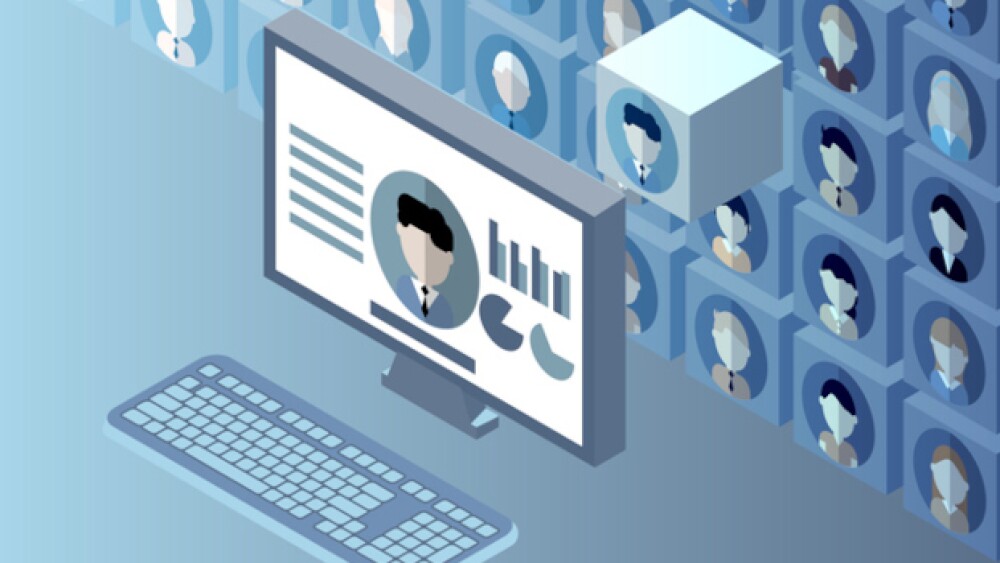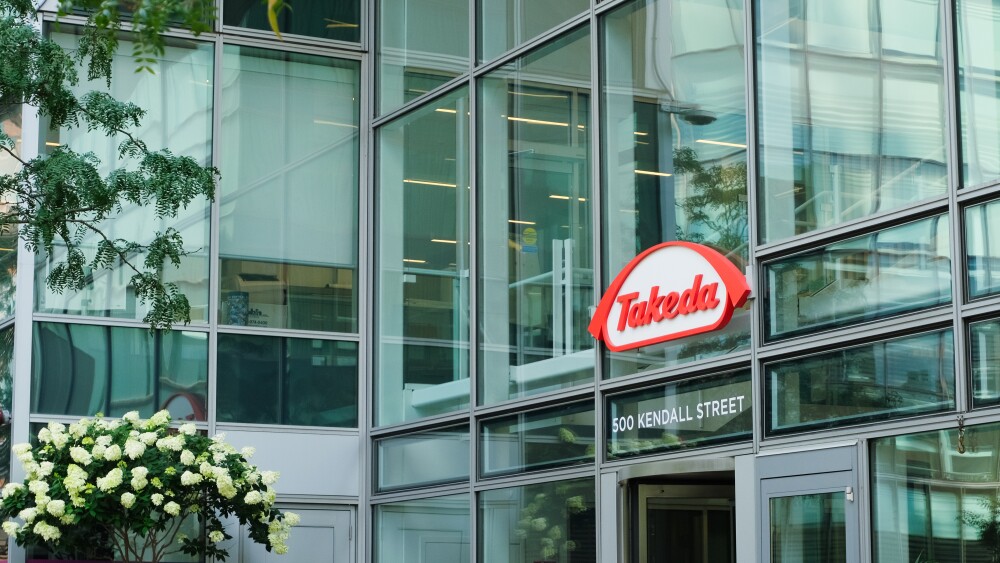The biopharma industry is moving toward using AI to try to determine how well a given person would perform in a role, with applications that go beyond recruiting.
Pictured: Illustration of a computer choosing from a display of candidate profiles/iStock, Piscine
AI is everywhere, whether we realize it or not.
That’s the sentiment held by Liz Nguyen, an advisor to emerging biotech companies who previously worked as the senior vice president of talent and culture at the biotech Surrozen. Artificial intelligence, or AI, is already operating behind the scenes in many aspects of business, including recruitment and retention of employees within biotech.
“AI is part of our LinkedIn platforms and our social media,” Nguyen said. Right now, a number of applicant tracking systems are using AI to help source positions for companies and shoulder some of the administrative burden, handling tasks such as scheduling interviews, crafting language for email replies and producing first drafts of onboarding materials such as employee handbooks.
At the same time, many emerging companies have yet to adopt such tools, she noted. And many of these tools produce work that still needs to be edited or reviewed by a human. Tools such as ChatGPT can help emerging companies get started on tasks like writing job descriptions, but “they still need to be personalized,” Nguyen said.
Higher volume businesses like Takeda also use AI for screening resumes. The goal is to help companies fill positions faster and more efficiently, a benefit for both applicants and employers, said Jimmy Zhang, vice president and head of global talent at Takeda.
The tool the company uses “looks at the content of the resume that’s being submitted, looks at the content of the job and actually rates those resumes to different letter categories,” Zhang said. “Based on that, we prioritize how we reach out. And what we saw was, depending on the letter grade—we actually did a deep dive data analysis—the higher graded categories of people tend to stay longer [in their job] versus lower categories.”
Reprogramming Bias
Some regulators and others have voiced concerns about the potential for AI tools to perpetuate cultural biases in recruiting. But Zhang said that one of the benefits of using AI for resume scoring is that it has the potential to remove the biases that creep into human screening. It’s theoretically easier to recode or reprogram a bias out of an AI program than it is to eliminate a person’s learned assumptions.
“Resume scoring systems actually remove a lot of the biases that we have seen before,” Zhang said. He used education as an example: People might have biases around graduates of certain colleges and universities based on their lived experiences. But he said these AI scoring systems don’t look at that.
“The only thing that it’s looking at is the potential,” he said. “It’s not looking at your name, it’s not looking at [where you got your] education, your pedigree, and so on anymore, which is making the process more effective, in my mind. It’s actually providing more concrete descriptions on the work that you do with your resume.”
Location and Talent Scouting Using AI
Some larger companies are also using AI in a more proactive way to find and recruit new talent. For example, Takeda is using an AI software vendor, Terrain Analytics, to not only identify how many software developers or scientists might be in an area the company is considering expanding into, but how good those people are at their jobs, Zhang said. Johnson & Johnson also uses Terrain Analytics, according to Terrain CEO Mark Jacobson.
“We’re looking at how do we actually identify, not just quantity of . . . the market players, but also the quality,” Zhang said. “We found that to be extremely useful to us.”
Terrain Analytics uses 80 different sources of publicly available data on 570 million people and 65 million companies around the world in its models, Jacobson said. This data includes things like professional social media profiles, rate of promotion within a resume, lists of authors of scientific publications, patents and their authors, code collaborations and government data.
“When we get that data, we anonymize it,” Jacobson said. “So we’re not taking names, home addresses, personal emails, but we do understand titles and we understand companies.”
Once Takeda gets that data, it uses it to decide whether to build out in a new location, and then to do a more detailed mapping and brand awareness campaign to try to amplify the brand as a preferred employer.
“The types of analytics we have provided to Takeda run the gamut . . . from doing global assessments on its own global talent footprint . . . as well as competitor analysis,” Jacobson said.
Terrain Analytics currently provides talent rank in three categories: software engineers, hardware engineers and life science research talent.
Jacobson said it’s easier to create a defensible AI model ranking worker contributions for these science-based skills than it is for categories where softer people skills are more important, such as HR, legal or sales.
“There’s so much information, historically, in recruiting that has been local knowledge, tribal knowledge or kind of lost within people’s emails or even worse, notebooks. The benefits of applying technology are: you can interpret much, much larger volumes of data; you can do it with greater accuracy; and you can do it much faster,” Jacobson said.
Streamlining Still Needed
Barriers for the use of many of these AI tools in recruitment include cost and the lack of streamlined, multifunctional software tools.
“Right now AI is still in the nascent stage, and it’s expensive,” Nguyen said.
For Takeda, a bigger issue is lack of efficiency.
“There’s actually too many AI providers and vendors out there right now,” Zhang said. Recruiters are logging into as many as 15 different systems to do their day to day work, he said, and each of these are great tools that solve for a specific need. But toggling among this many systems creates its own problem.
“We’re trying everything we can to have a more integrated experience,” Zhang said. “And I would say that’s probably pretty unique to Takeda, because a lot of the frustration I’m hearing from other companies is they are still trying to pull in additional tools.”
Nguyen thinks the shift into a more AI-driven recruitment process will happen eventually, but it can never replace human interaction.
“It’s not going to change the impact that you would have, having coffee with someone or meeting with them, getting to know them or the personal touch,” she said. But she doesn’t see that as a knock against AI. “In fact, by having AI manage all the administrative pieces, it gives you more time to connect with people personally.”
“I think it’s really going to help evolve how we think,” she said, “and how we connect with people, as an enabler versus as a replacement.”
Mollie Barnes is a freelance science writer based in Los Angeles. Reach her at mollie@100yearsco.com. Follow her on Threads and Instagram @shejustlikedtogo and see more of her work at molliebarnes.contently.com.






